First there was the original song of Kenny B – Parijs:
Quickly there came a parody from The Hague (Den Haag)
And not much later, a parody from Amsterdam was there…
And Rotterdam…
May 16th, 2015
First there was the original song of Kenny B – Parijs:
Quickly there came a parody from The Hague (Den Haag)
And not much later, a parody from Amsterdam was there…
And Rotterdam…
May 14th, 2015
International Volvo Photo Locations Part 157

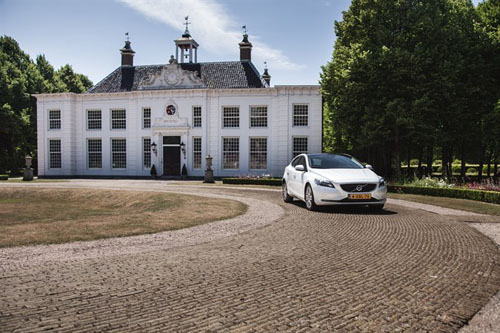
2014 – Volvo V40
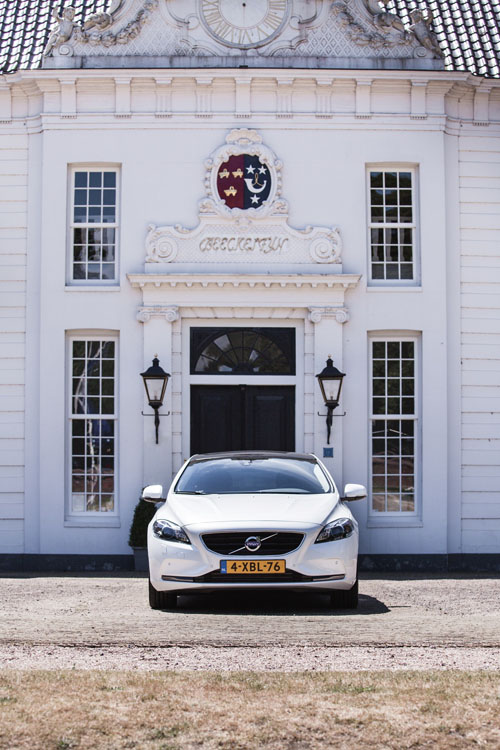
2014 – Volvo V40
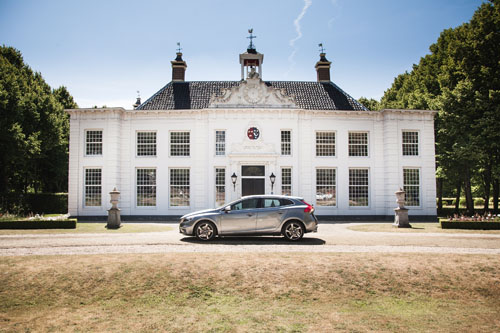
2014 – Volvo V40
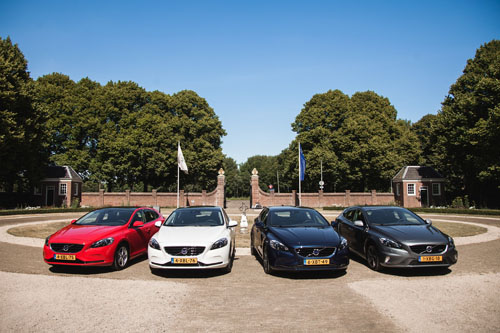
2014 – Volvo V40
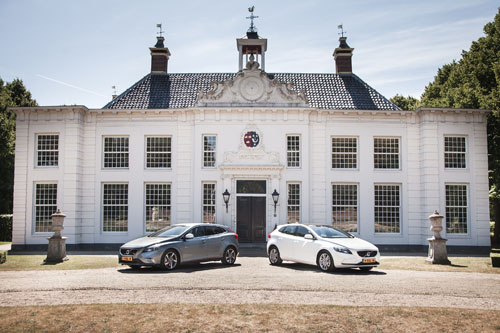
2014 – Volvo V40
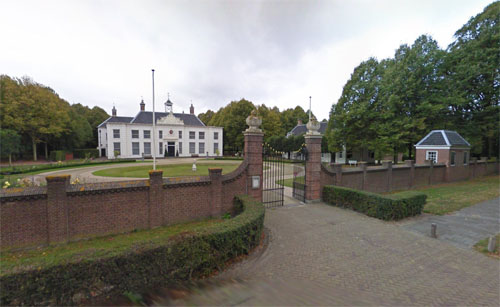
2015 – Landgoed Beeckestijn in Velsen Zuid – Netherlands (Google Streetview)
Beeckestijn is a historical buitenplaats dating from the 18th century in a park by the same name in Velsen-Zuid, Netherlands.
The Beeckestijn site was a buitenplaats in the 15th and 16th centuries before the current English-style garden was designed in the 18th century. The house and the accompanying gardens are listed for varying reasons in the National register of Dutch monuments. The original design of the current garden plan from 1772 was preserved in an engraving by the landscape designer Johann Georg Michael (1738-1800), who also designed the neighboring park Waterland. He was commissioned by the owner Jacob Boreel who had visited England and wished for a garden in the style of Stowe, Kewe Gardens and Wimpole. The gardens were partially redesigned in 1936 by the landscape designer Leonard Springer (1855-1940). Throughout the park are three bunkers from WWII that were sunk after the war by pumping the sand beneath them away. One of these bunkers is below the shell pond near the rear of the house.
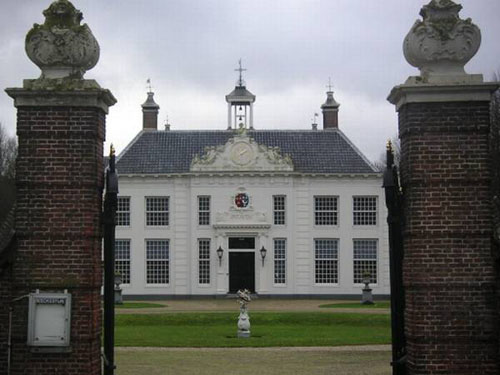
2015 – Landgoed Beeckestijn at the Rijksweg in Velsen Zuid in the Netherlands
The house had various owners until being bought by the Trip family in the 17th century. Jan Trip the younger expanded the house to its present state in 1716-1721. The main building seen today has a sculpture on the facade and some stuccos within by Ignatius van Logteren (1685-1732). The house was occupied as a residence until 1924 when it fell into disuse. In 1939 it was used by a Dutch regiment who caused a lot of damage, and in 1941 it was occupied by German infantry. In 1942 the three Atlantikwall bunkers were built in the garden. After the war the house was occupied by Canadians before becoming the property of Jonkvrouwe Agnes Cremer-Boreel who sold it to Velsen. The restoration was completed in 1969 and the property opened as a museum, with a yearly garden festival and a yearly pop festival taking place there.
In 2006 the museum with rooms in the style of the owner Jacob Boreel was closed. The property now belongs to the Vereniging Hendrick de Keyser, which restores and manages other heritage sites in the area. Beeckestijn is due to reopen as a museum of landscape, due to its importance as a relic of Dutch garden history, as well as its role in the nearby water management history (the house was originally on the Wijkermeer).
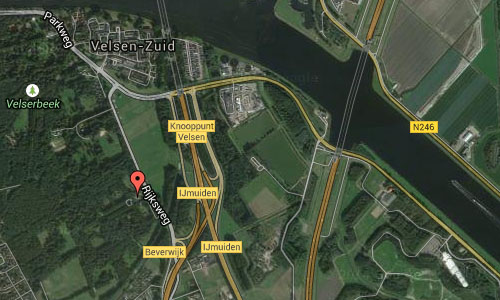

More information on www.vriendenvanbeeckestijn.nl, nl.wikipedia.org, www.buitenplaatsbeeckestijn.nl and www.natuurmonumenten.nl.
April 27th, 2015
Volvo Photo Locations Part 161

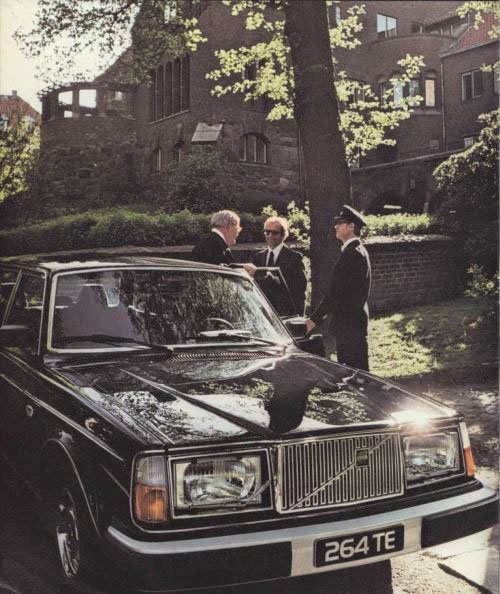
1979 – Volvo 264TE
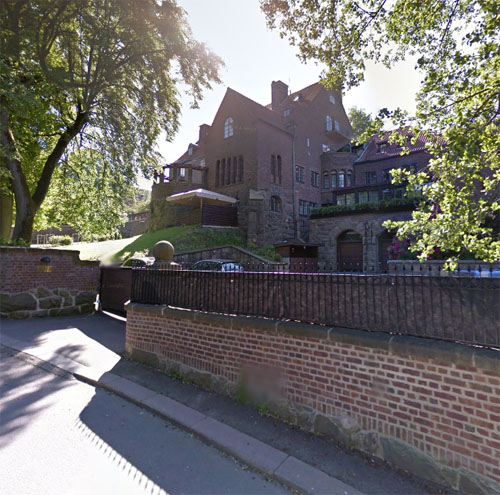
2015 – Olof Wijksgatan in Göteborg (Google Streetview)
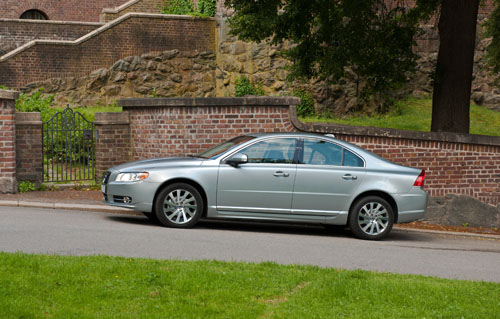
2010 – Volvo S80
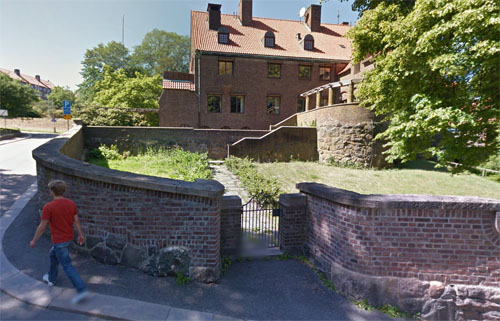
2016 – Olof Wijksgatan in Göteborg (Google Streetview)
Olof Wijksgatan is a street in Lorensbergs villastad or Lorensbergs residential area in Göteborg, close to Lyckans väg. The villas and a terraced houses are almost all built between 1913 and 1925. All but three buildings have stone with brick facades, and all contained large dwellings to 400 square meters. They are built mainly in the National Romantic style but also 1920s classicism occurred. The villas are built with 2 to 3 floors and almost all have facades of red or maroon brick.
The villa pictured above is on the adress Lyckans väg 4 and is called ‘Carlanderska villan’ designed by architects Arvid Bjerke & R. O. Swensson in 1913. Architect Arvid Bjerke is known from Göteborgs Konstmuseum 1919-1925 and Göteborgs Konsthall 1923 at Götaplatsen.
The villa was the private residence to SKF’s founder Axel Carlander. The family Carlander entered in 1914 the Carlanderska villa at Lyckans väg 4 in Lorensbergs residential area, designed by Arvid Bjerke.
Axel Carlander was also a member of the Board of Volvo AB between 1917 and 1926.
The villa had a gate in the garden during the Jubilee Exhibition in Göteborg in 1923, and was used to lead directly into the exhibition area, which was convenient both for family Carlander and for their royal guests who stayed with them. The villa was extended in 1930 and after Carlander wife passed away in 1961, the Hypoteksföreningen moved in.
Today, the building houses several appartments, and the street Lyckans väg is known at the most expensive street in Göteborg.
Olof Wijksgatan in the district Lorensbergsvägen in Göteborg is named after Olof Wijk the Youngest,
Olof Wijk Jr., born July 21, 1833 in Göteborg, died September 17, 1901, businessman, donor (Olof and Caroline Wijk’s Fund) and politicians (moderate-liberal); Member of Parliament (Lower House) 1867-1890, President 1880-1890. On 24 October 1890, he was the second last person that was knighted in Sweden and was introduced in the House of Nobility in 1891 with no. 2342.
His family originated from Wiken Mellangården, Björlanda parish in Hisingen. His noble branch of the family became extinct with his son Hjalmar in 1965.
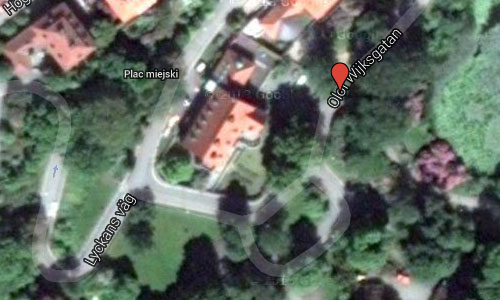
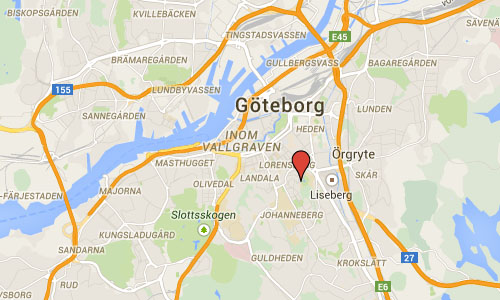
More information at Lorensberg and sv.wikipedia.org
April 20th, 2015
International Volvo Photo Locations Part 156

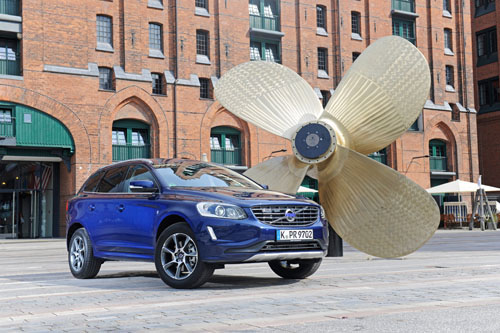
2014 – Volvo XC60 Ocean Race Edition
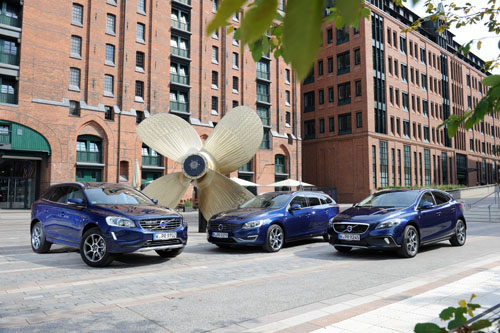
2014 – Volvo XC60, Volvo V60 and Volvo V40 Ocean Race Edition
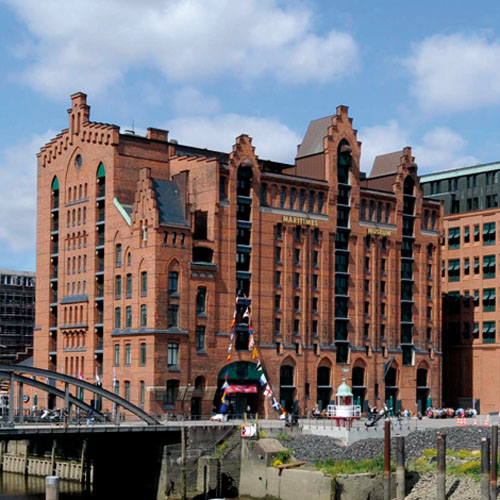
2014 – Maritimes Museum at Koreastraße 1 in Hamburg, Germany
The Internationales Maritimes Museum Hamburg (International Maritime Museum) is a private museum in the HafenCity quarter of Hamburg, Germany. The museum houses Peter Tamm’s collection of model ships, construction plans, uniforms, and maritime art, amounting to over 40,000 items and more than one million photographs. It opened in a former warehouse in 2008.
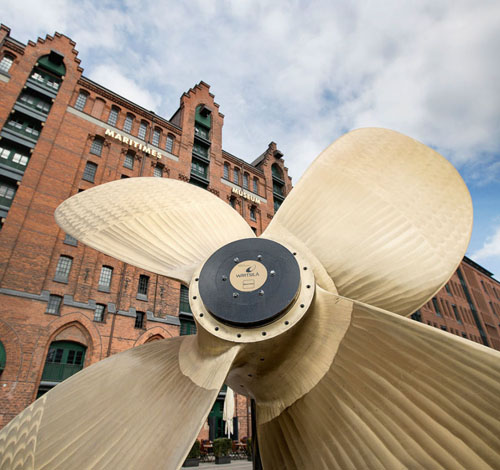
2014 – Maritimes Museum at Koreastraße 1 in Hamburg, Germany
The private collection was started in 1934 by Peter Tamm—former chairman of the board of the Axel Springer AG—when Tamm was six years old. As Tamm retold the history, the initial event was when his mother presented him his first model ship. Prior to the opening in the HafenCity, the collection was called “Wissenschaftliches Institut für Schifffahrts- und Marinegeschichte” (Academic Institute of Shipping and Naval History) and located in a mansion at the Elbchaussee street and only open by appointment.
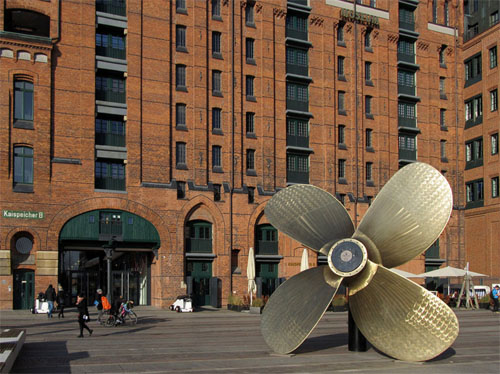
The Kaispeicher B (quay warehouse B) is the oldest preserved warehouse in Hamburg, built in 1878 and 1879 by the architects Bernhard Georg Jacob Hanssen and Wilhelm Emil Meerwein. It was built with a supporting structure of wood and steel columns, the outer walls of bricks also supporting the building. It was designed in neo-Gothic style. Constructed and used as a combination of a grain elevator and for ground storage for packaged goods. In 1890 the city of Hamburg bought the warehouse, which has been called Kaispeicher B ever since. In 2000 it was listed as a cultural heritage building but used as a warehouse for goods until the end of 2003.
In 2008 the museum was opened after a period of renovation. Mirjana Marcovic (MRLV Architekten) planned the renovations and received an award from the Architekten- und Ingenieurverein Hamburg. The bridge crossing the Brocktorhafen—a steel construction of 80 t (79 long tons; 88 short tons) in the shape of a boomerang with a length of 60 m —by architect Dietmar Feichtinger (Paris) and WTM Engineers (Hamburg) also received an award in 2008.
The museum is located in the Speicherstadt (warehouse district) in the port of Hamburg.
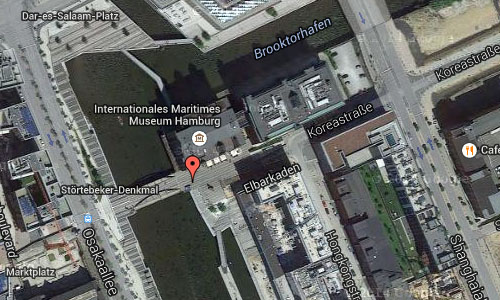
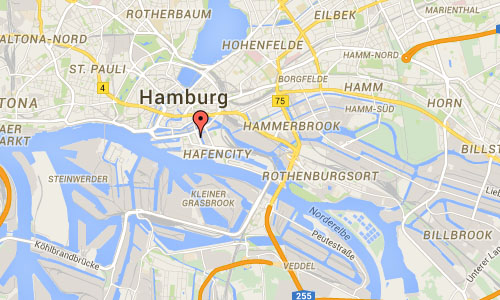
More information on www.internationales-maritimes-museum.de, www.hamburg-travel.com, www.hamburg.de and en.wikipedia.org.
April 20th, 2015
International Volvo Photo Locations Part 155


2019 – Volvo XC90 Inscription at Operahuset on Operagata in Oslo Norway 🇳🇴
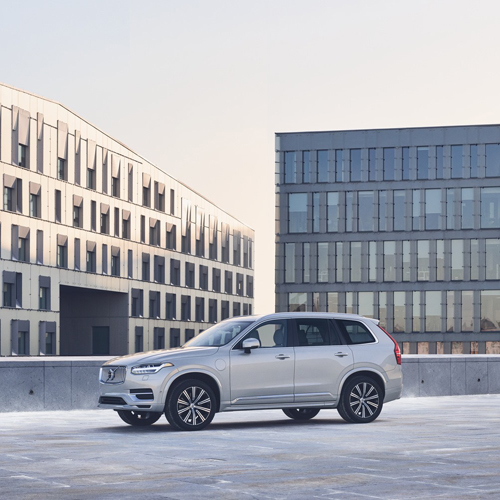
2019 – Volvo XC90 Inscription at Operahuset on Operagata in Oslo Norway 🇳🇴

2018 – Volvo XC90, S90 and V90 Cross Country at Oslo Opera in Oslo, Norway 🇳🇴.
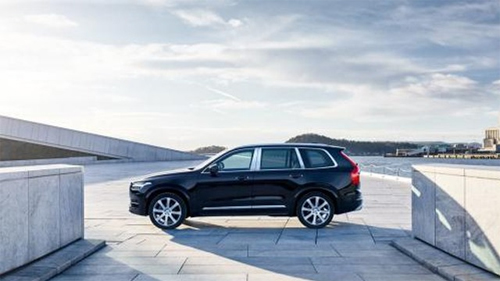
2015 – Volvo XC90 Excellence at Operahuset on Operagata in Oslo, Norway 🇳🇴

2015 – Volvo XC90 Excellence at Operahuset on Operagata in Oslo, Norway 🇳🇴
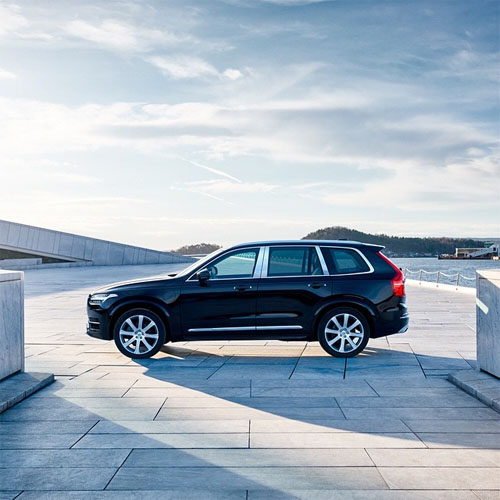
2015 – Volvo XC90 Excellence at Operahuset on Operagata in Oslo, Norway 🇳🇴
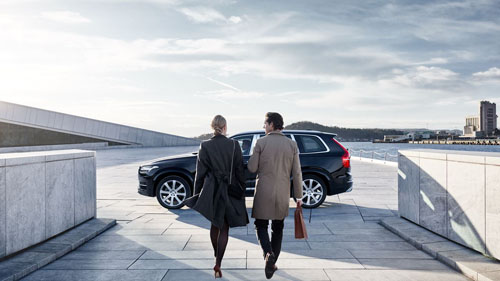
2015 – Volvo XC90 Excellence at Operahuset on Operagata in Oslo, Norway 🇳🇴
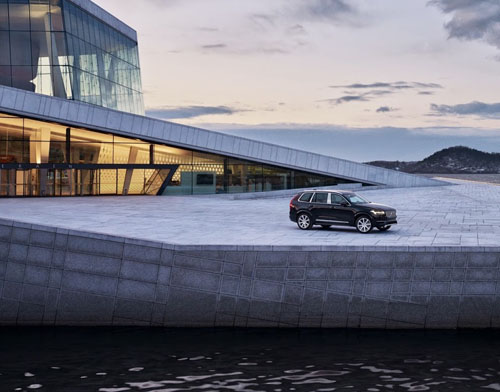
2015 – Volvo XC90 Excellence at Operahuset on Operagata in Oslo, Norway 🇳🇴
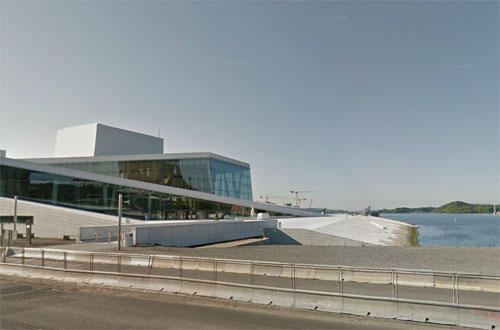
2015 – Operahuset on Operagata in Oslo, Norway (Google Streetview)
The Oslo Opera House (Norwegian: Operahuset) is the home of The Norwegian National Opera and Ballet, and the national opera theatre in Norway. The building is situated in the Bjørvika neighborhood of central Oslo, at the head of the Oslofjord. It is operated by Statsbygg, the government agency which manages property for the Norwegian government. The structure contains 1,100 rooms in a total area of 38,500 m2. The main auditorium seats 1,364 and two other performance spaces can seat 200 and 400. The main stage is 16 m wide and 40 m deep. The angled exterior surfaces of the building are covered with Italian marble and white granite and make it appear to rise from the water. It is the largest cultural building constructed in Norway since Nidarosdomen was completed circa 1300.
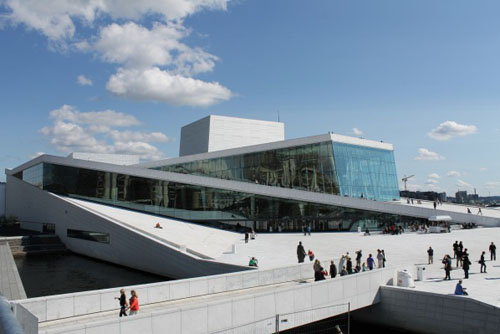
2015 – Operahuset in Oslo Norway
After a long national debate Norway’s legislature, decided in 1999 to construct a new opera house in the city. A design competition was held and of the 350 entries received, the judges chose that of the Norwegian firm Snøhetta. Construction started in 2003 and completed in 2007, ahead of schedule and 300 million NOK under its budget of 4.4 billion NOK. The gala opening on 12 April 2008 was attended by his majesty King Harald, Queen Margrethe II of Denmark and President Tarja Halonen of Finland and other leaders. During the first year of operation, 1.3 million people had passed through the building’s doors.
The Opera House won the culture award at the World Architecture Festival in Barcelona in October 2008 and the 2009 European Union Prize for Contemporary Architecture (Mies van der Rohe award).
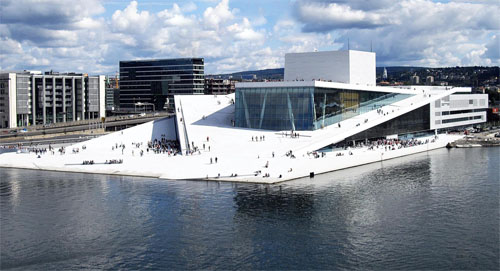
The roof of the building angles to ground level creating a large plaza inviting pedestrians to walk up and enjoy the panoramic views of Oslo. The angles and paving materials are also skateboard-friendly allowing skateboarders to use some areas. Skateboarders are discouraged from areas closer to performance spaces by the use of steps and paving not conducive to skateboarding. While much of the building is covered in white granite and La Facciata, a white Italian carrara marble, the stage tower is clad in white aluminum in a design by Løvaas & Wagle evoking old weaving patterns.
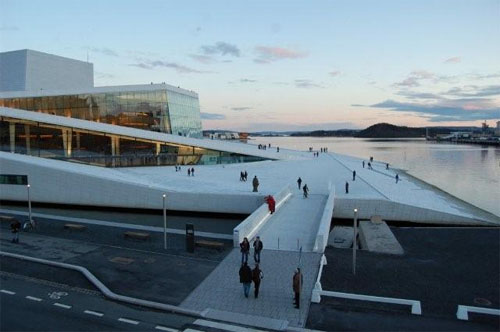
The lobby is surrounded by 15 m tall windows with minimal framing and special glass that allows maximum views of the water. The roof is supported by thin angled columns also designed not to interfere with views.
Interior surfaces are covered in oak to bring warmth to spaces in contrast to the coolness of the white exterior. The main auditorium is a horseshoe shape and illuminated by an oval chandelier containing 5,800 handmade crystals. Seats include monitors for the electronic libretto system, allowing audiences to follow opera libretti in Norwegian and English in addition to the original language.
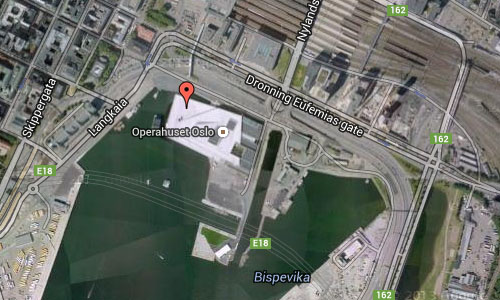
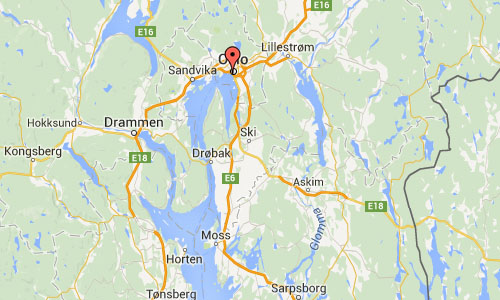
More information on operaen.no, snohetta.com, www.visitnorway.com and en.wikipedia.org.
April 13th, 2015
Volvo Photo Locations Part 160

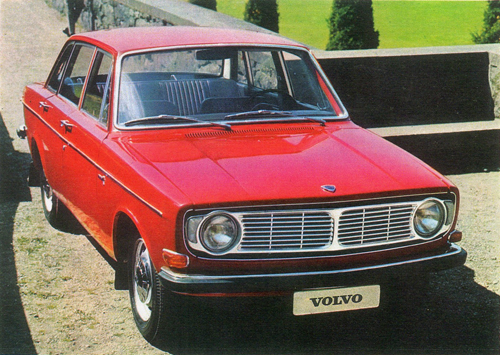
1967 – Volvo 144 at Tjolöholm in Kungsbacka, Sweden 🇸🇪.
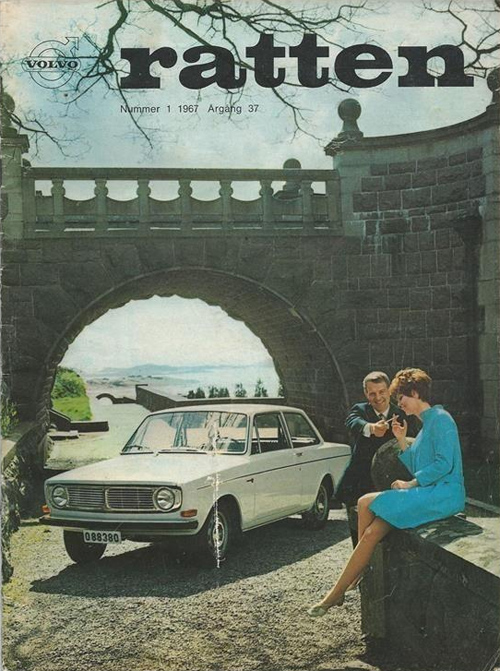
1967 – Volvo 142 at Tjolöholm in Kungsbacka, Sweden 🇸🇪.
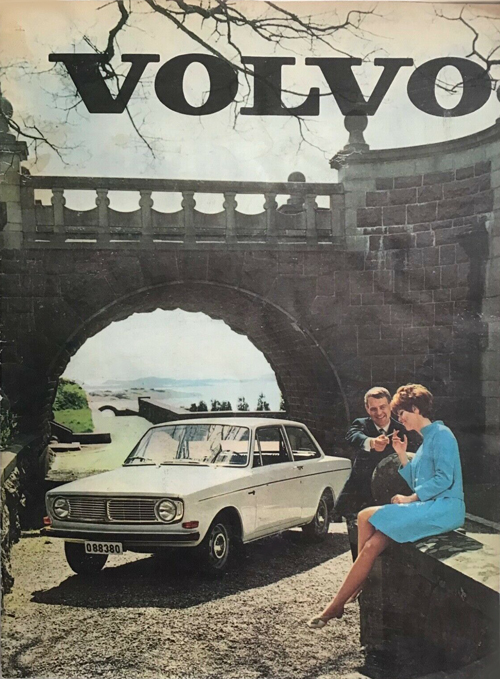
1967 – Volvo 142 on Tjolöholms Slott near Kungsbacka, Sweden 🇸🇪.
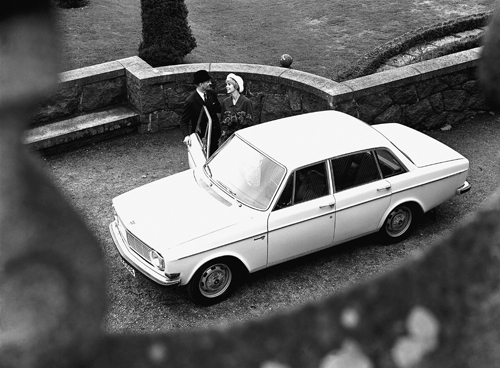
1967 – Volvo 144S at Tjolöholm in Kungsbacka, Sweden 🇸🇪.
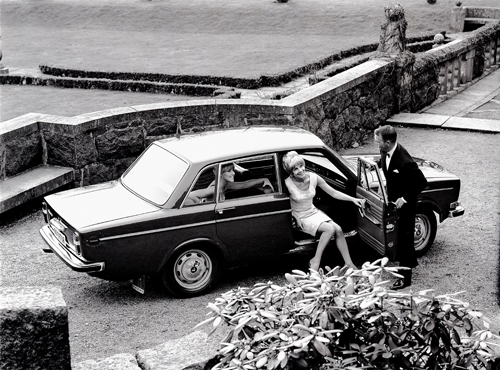
1967 – Volvo 144 at Tjolöholm in Kungsbacka, Sweden 🇸🇪.
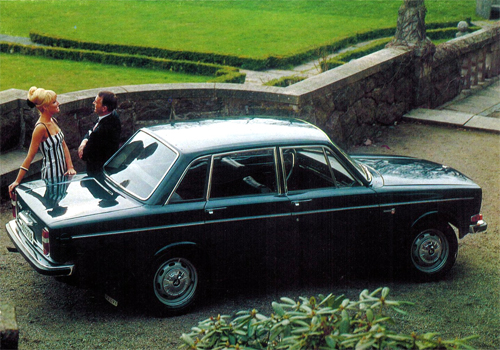
1967 – Volvo 144 at Tjolöholm in Kungsbacka, Sweden 🇸🇪.
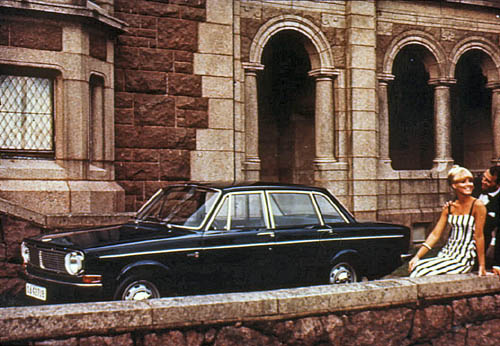
1967 – Volvo 144S at Tjolöholm in Kungsbacka, Sweden 🇸🇪.
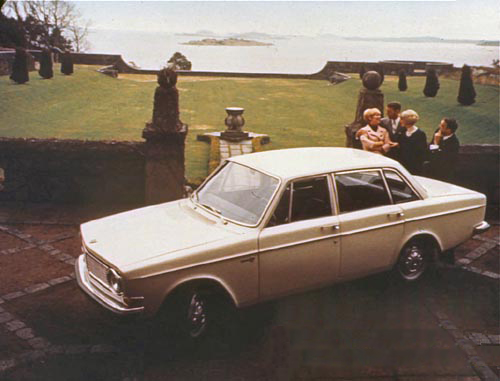
1967 – Volvo 144S at Tjolöholm in Kungsbacka, Sweden 🇸🇪.
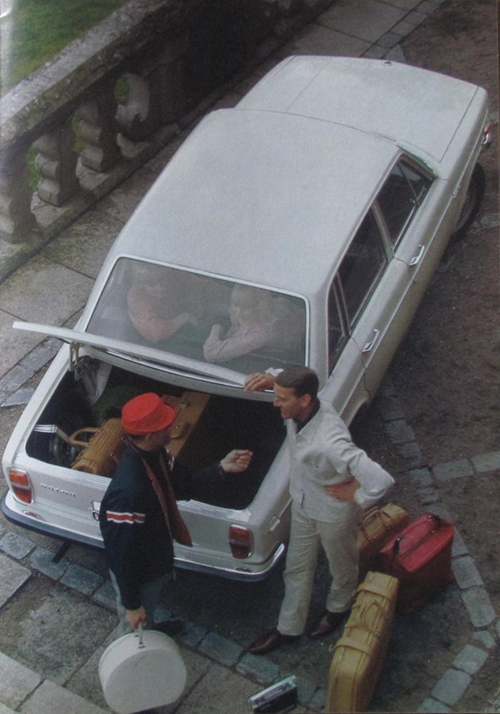
1967 – Volvo 144 at Tjolöholm in Kungsbacka, Sweden 🇸🇪.
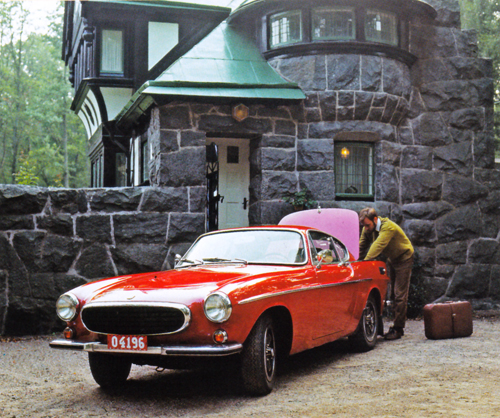
1968 – Volvo 1800 S at Grindstugan near Tjolöholms Slott near Kungsbacka, Sweden 🇸🇪.
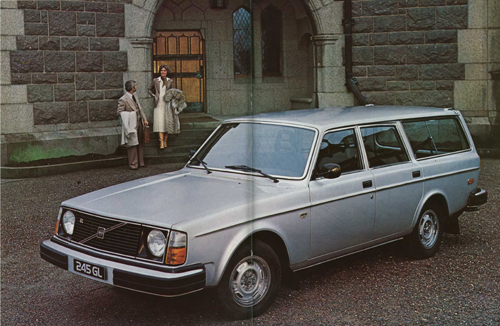
1978 – Volvo 245 GL UK at Tjolöholm in Kungsbacka
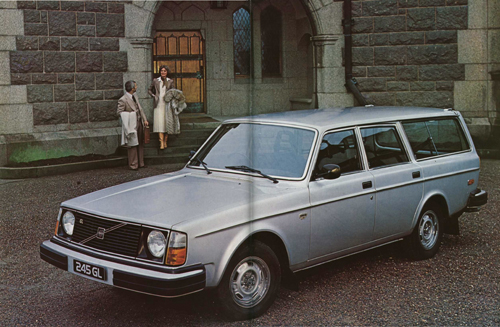
1978 – Volvo 245 GL UK at Tjolöholm in Kungsbacka, Sweden 🇸🇪.
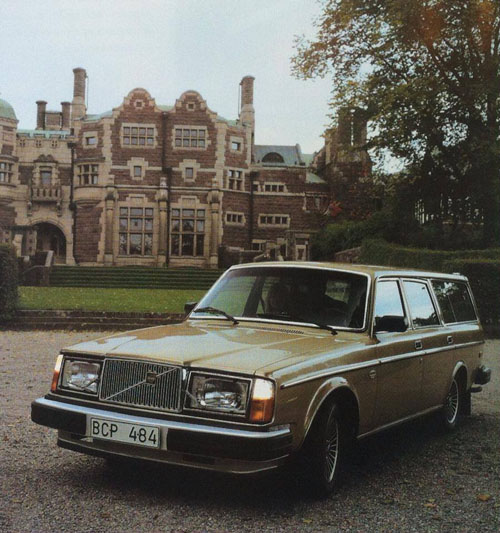
1979 – Volvo 265 GLE at Tjolöholm in Kungsbacka, Sweden 🇸🇪.
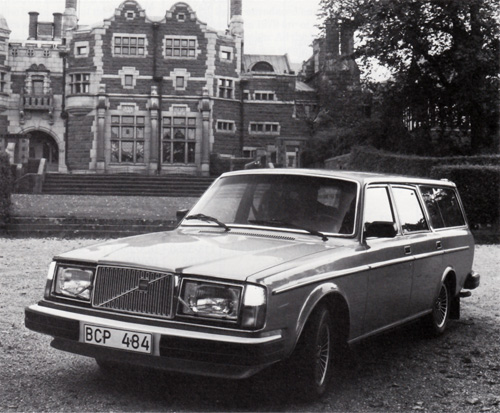
1979 – Volvo 265 GLE at Tjolöholm in Kungsbacka, Sweden 🇸🇪.
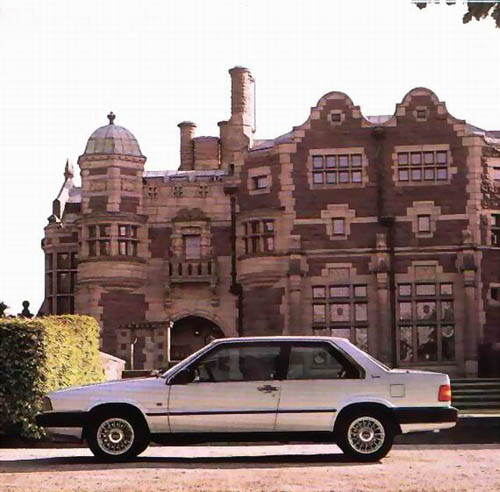
1986 – Volvo 780 at Tjolöholm in Kungsbacka, Sweden 🇸🇪.
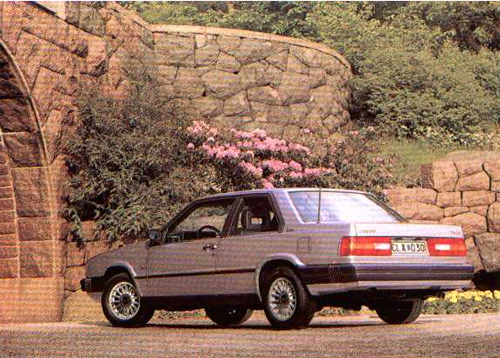
1986 – Volvo 780 at Tjolöholm in Kungsbacka, Sweden 🇸🇪.
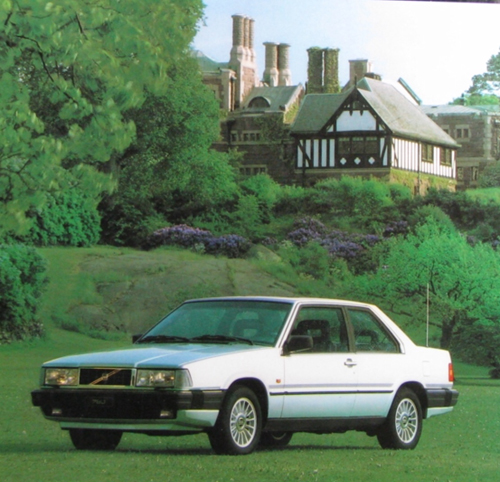
1986 – Volvo 780 at Tjolöholms slott in Kungsbacka, Sweden 🇸🇪.
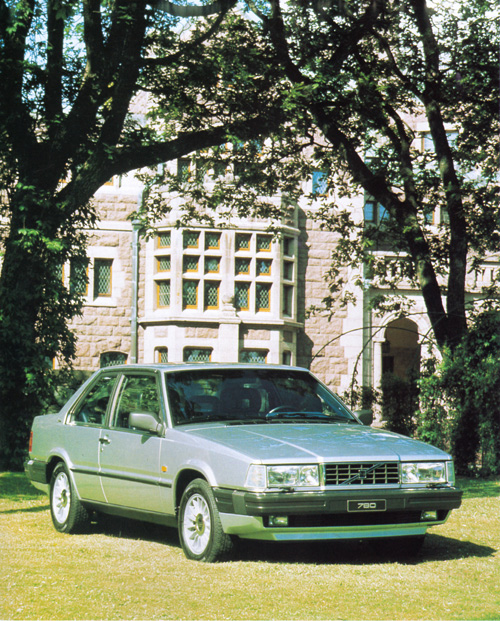
1986 – Volvo 780 at Tjolöholms slott in Kungsbacka, Sweden 🇸🇪.
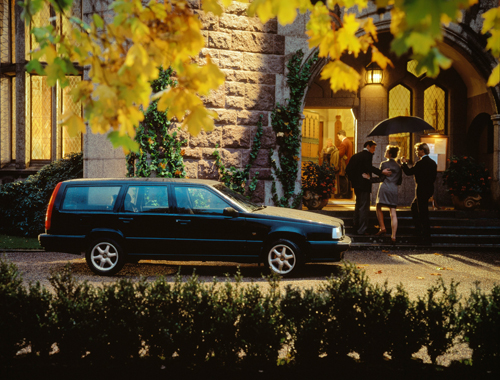
1993 – Volvo 850 GLT at Tjolöholm Slott in Kungsbacka, Sweden 🇸🇪.
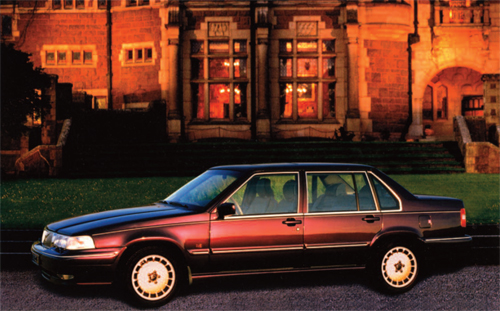
1996 – Volvo 960 Oxford at Tjolöholm in Kungsbacka, Sweden 🇸🇪.
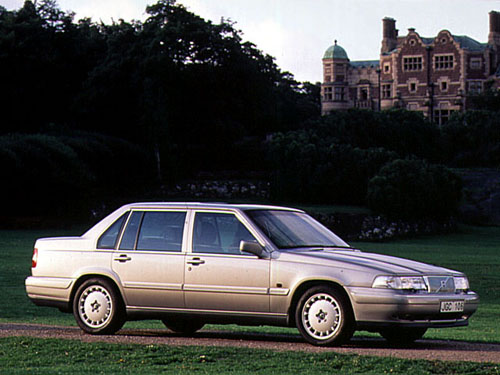
1997 – Volvo 960 at Tjolöholm in Kungsbacka, Sweden 🇸🇪.

1997 – Volvo 960 at Tjolöholm in Kungsbacka, Sweden 🇸🇪.
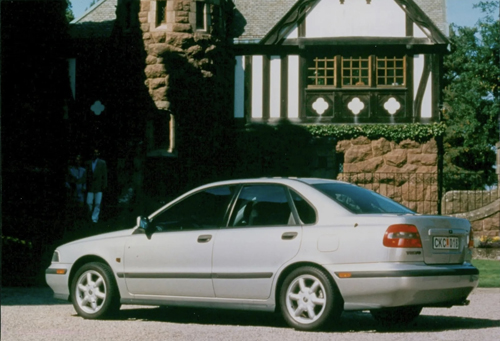
1997 – Volvo S40 at Tjolöholm in Kungsbacka, Sweden 🇸🇪.
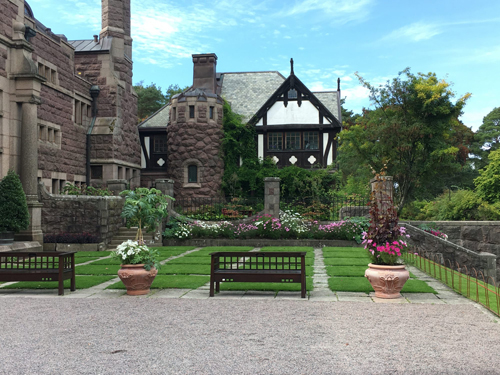
2022 – Tjolöholms Slott near Kungsbacka.
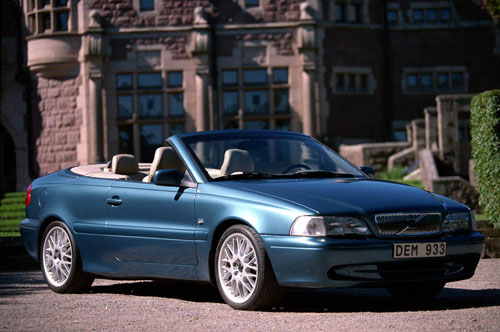
1999 – Volvo C70 Convertible T5 at Tjolöholm in Kungsbacka, Sweden 🇸🇪.
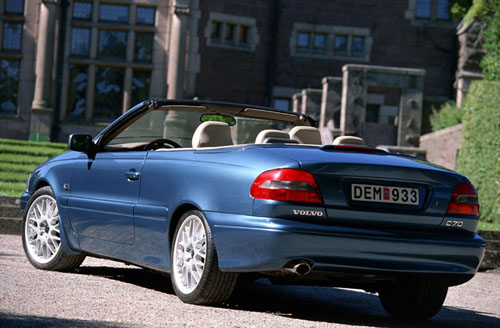
1999 – Volvo C70 Convertible T5 at Tjolöholm in Kungsbacka, Sweden 🇸🇪.
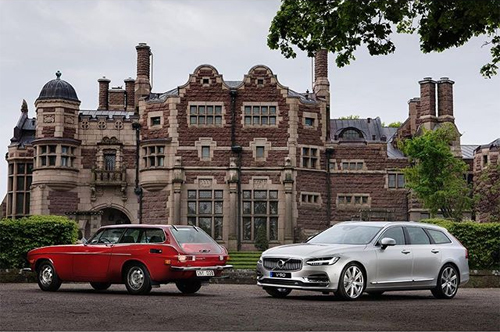
2016 – Volvo 1800ES & Volvo V90 at Tjolöholm in Kungsbacka, Sweden 🇸🇪.
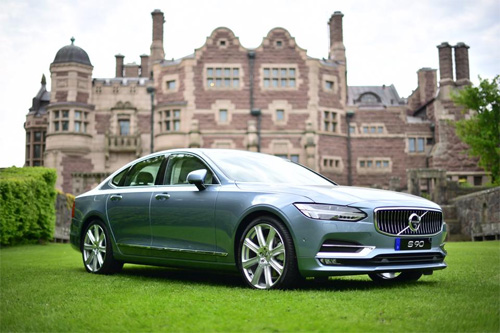
2016 – Volvo S90 at Tjolöholm in Kungsbacka, Sweden 🇸🇪.
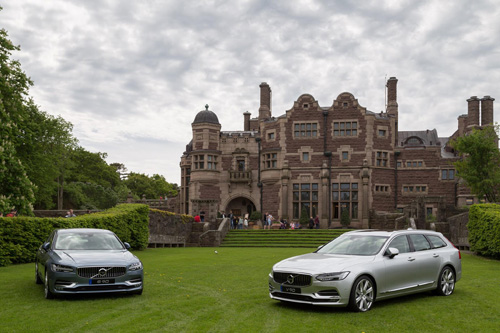
2016 – Volvo S90 & V90 at Tjolöholm in Kungsbacka, Sweden 🇸🇪.
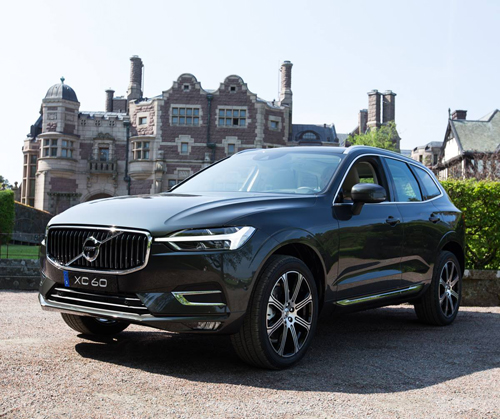
2017 – Volvo XC60 at Tjöloholm Slott near Kungsbacka, Sweden 🇸🇪.
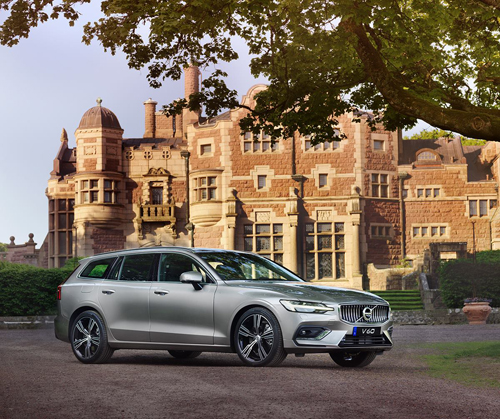
2018 – Volvo V60 at Tjöloholm Slott near Kungsbacka, Sweden 🇸🇪.
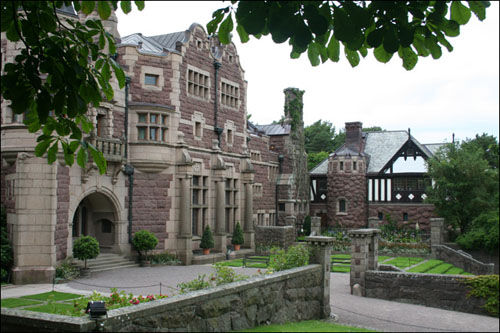
2015 – Tjolöholms Slott
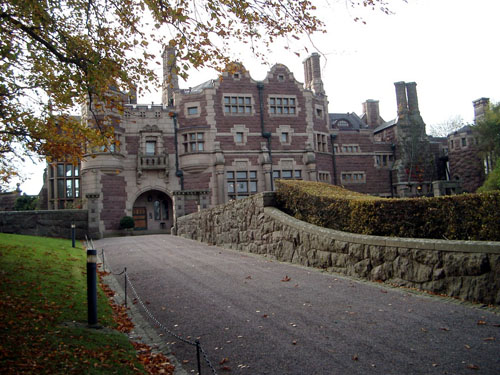
2015 – Tjolöholm slott Entrance
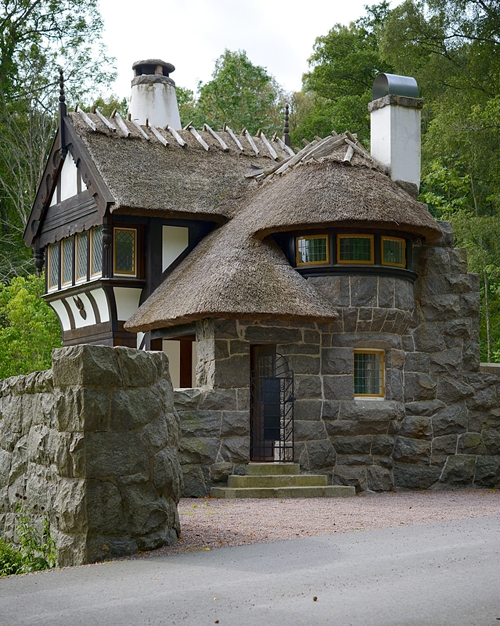
2022 – Grindstugan near Tjolöholms Slott
Tjolöholm Castle (Swedish: Tjolöholms slott) is a country house, built 1898-1904, in Kungsbacka, Halland, Sweden. It is located on a peninsula in the Kungsbacka Fjord on the Kattegat coast. Tjoloholm Castle was designed in the Arts and Crafts style by architect Lars Israel Wahlmann.
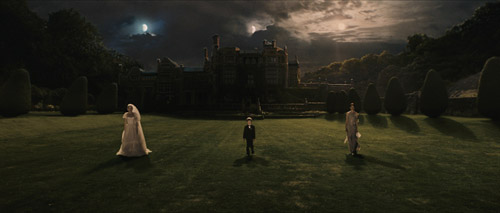
2011 – Scene from the film Melancholia by Lars von Trier
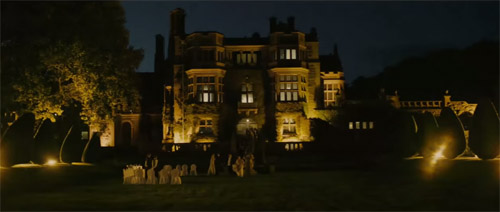
2011 – Scene from the film Melancholia by Lars von Trier
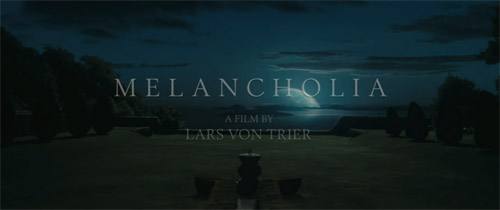
2011 – Scene from the film Melancholia by Lars von Trier
In 2010, Danish film director Lars Von Trier shot the exterior scenes of the film Melancholia at the castle. The film premiered at the 2011 Cannes Film Festival.
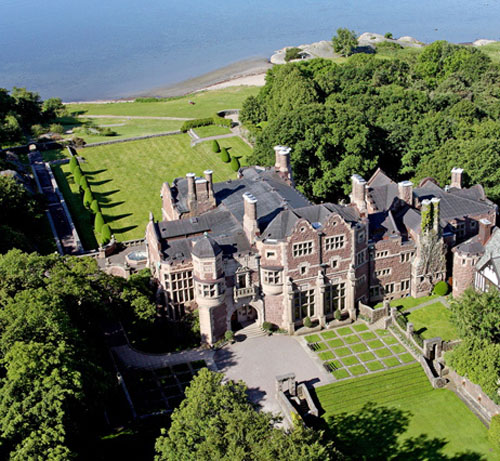
Tjolöholm Castle is one of Scandinavia’s leading Arts and crafts properties. The luxurious castle was finished in 1904, and is said to be one of Sweden’s most amazing buildings. The architect Lars Israel Wahlman designed it in the Tudor style for merchant James Fredrik Dickson and his wife, Blanche. The Castle’s lavish fittings had all the modern comforts of the day, such as one of the first vacuum cleaners, which weighed almost a ton, and state of the art surround showers. During the summer you have the chance to go on a guided tour of the castle in English.
Public tours take place every day during the summer season, and every weekend the rest of the year. Visitors are shown round many of the castle’s 36 rooms. Group tours, in Swedish, English, German or French can be booked year round.
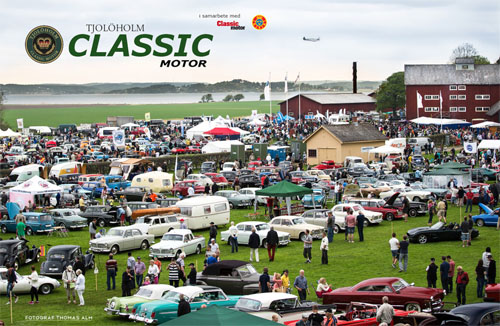
Every year in the month of May takes place at Tjolöholms Slott one of Sweden’s largest veteran car exhibitions, Tjolöholm Classic Motor, which is held at Tjolöholm in 2015 for the 22nd time. In 2015 there will be over 1000 exhibitors of different veteran vehicles are expected to come. More information at www.tjolholmclassicmotor.se.
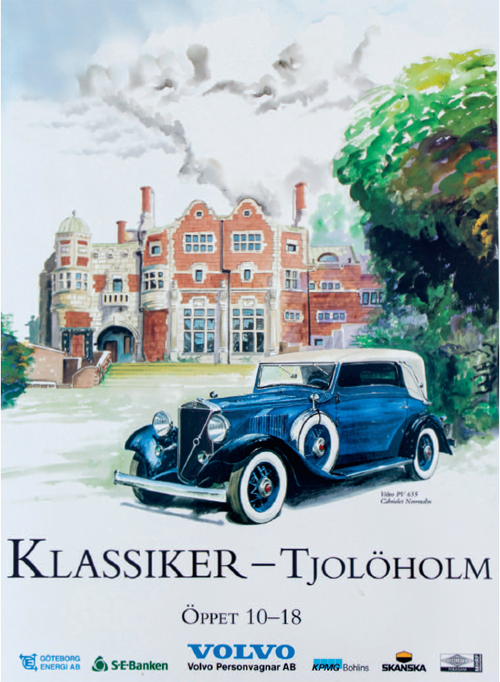
1995 – Poster from an early classic car meeting at Tjolöholms Slott: Klassiker Tjolöholm.
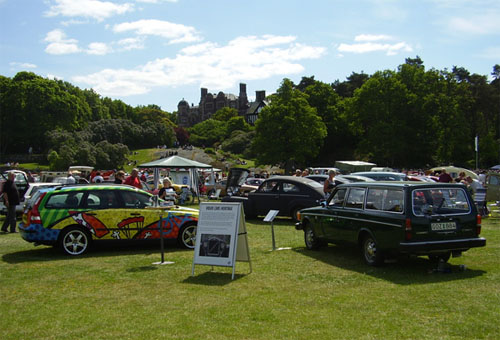
2008 – Volvo Cars Heritage at Tjolöholm Classic Motor
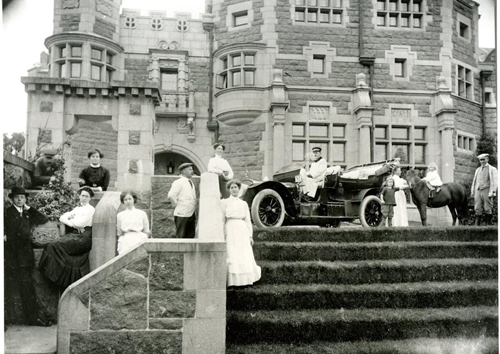
Automotive photography has always been popular at Tjolöholm Slott!
(Unkown car, unkown date)
Tjolöholm Castle is situated about 40 km south of Gothenburg. From the E6/E20, take exit 58, towards Fjärås/Tjolöholm. Follow the signposts to Tjolöholm from there.
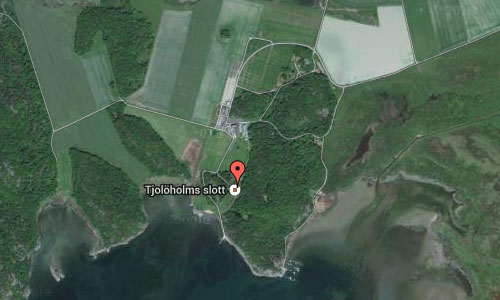
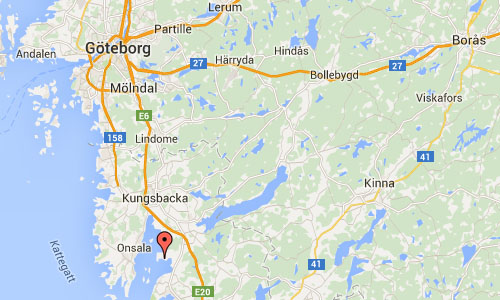
More information at www.volvocars.com, www.tjoloholm.se, www.tjolholmclassicmotor.se and sv.wikipedia.org.
April 13th, 2015
Volvo Photo Locations Part 159

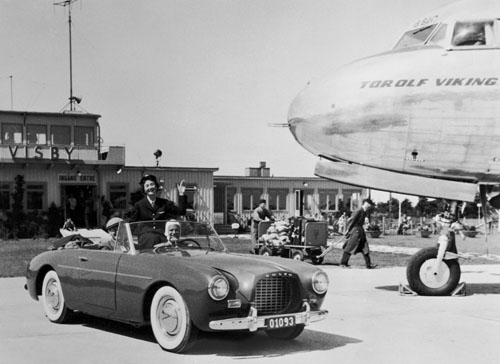
1956 – Volvo P1900 Sport
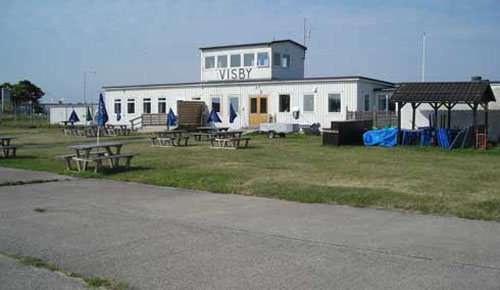
2011 – Old departure building at Visby Airport at Gotland
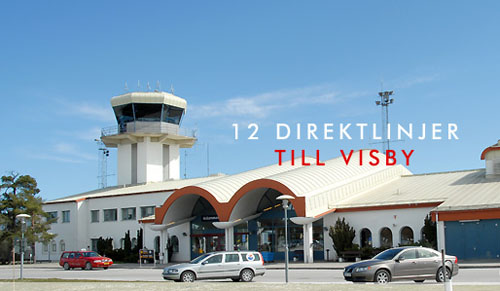
2013 – Current arrival and departure building at Visby Airport at Gotland
Visby Airport (IATA: VBY, ICAO: ESSV), is located about 3.5 kilometres north of the city of Visby at Gotland in Sweden.
Visby airport is Gotland’s only commercial airport and the 12th largest airport in Sweden. The airport had 340,393 passengers in 2011. The traffic has a large seasonal variation with many more passengers in the summer; in 2010 it had 17,606 passengers in January and 51,193 in July. Gotland is a popular tourist destination for Swedes.

Saab 90 Scandia SE-BSH Torolf Viking of SAS with Volvo Duett at Luleå Airport
Visby Airport, located in the heart of the Gotland countryside, and only three and a half kilometres from Visby centre is one of UNESCO’s world heritage sites.
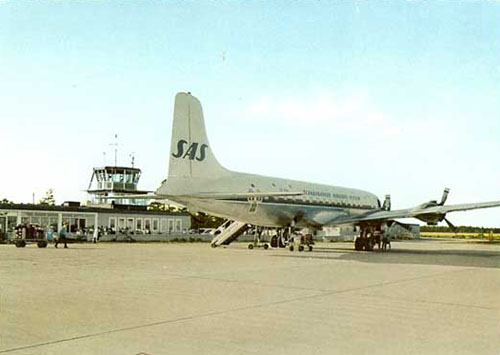
1962 – Visby Flygplats at Gotland
Visby Airport is a regional and military airport which is located five minutes from Visby centre. The Popular charter destinations from Visby Airport include Gran Canaria, Rhodes and Tallinn. Since Visby is a well-visited tourist destination during the summer months, flight departures and the airport coach service are increased during these warmer months. Today some 300 people work at the airport, which is designed and decorated to blend in with Gotland’s unique landscape.
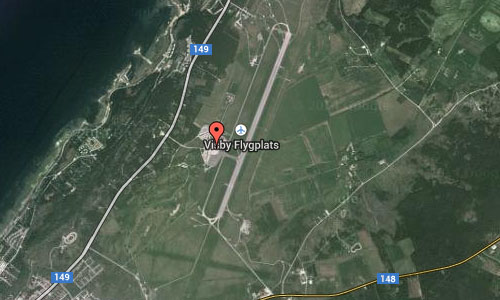
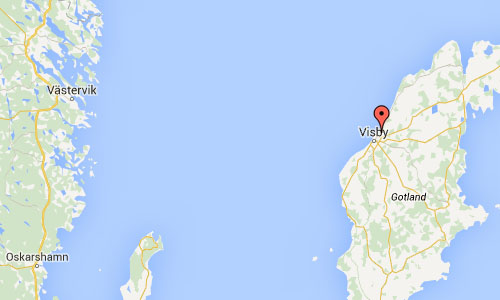
More information at www.swedavia.com and sv.wikipedia.org.
April 12th, 2015
Volvo Photo Locations Part 158

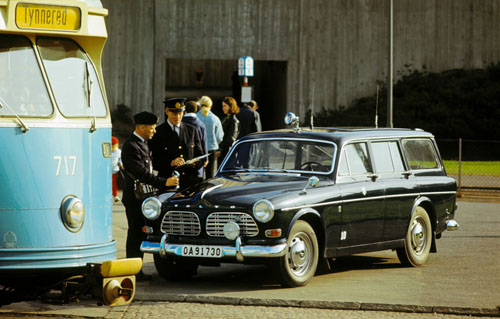
1967 – Volvo Amazon P220
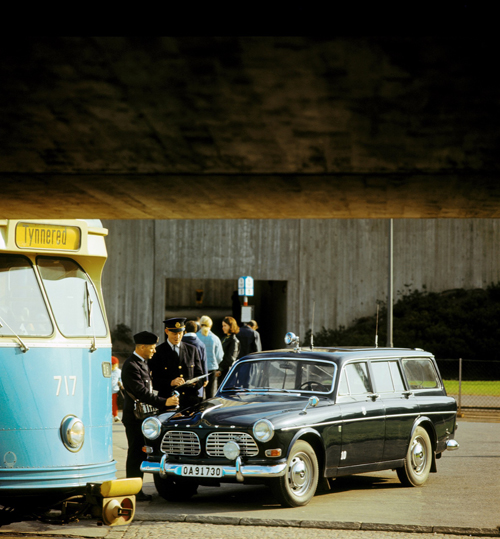
1967 – Volvo Amazon P220 at Wieselgrensplatsen in Göteborg
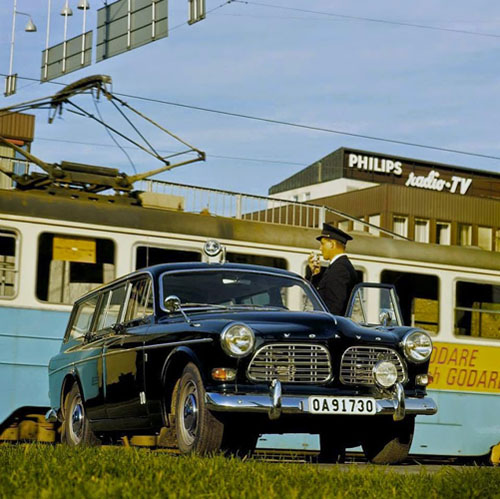
1968 – Volvo P220
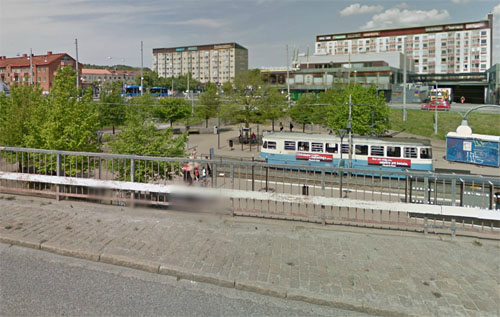
2015 – Wieselgrensplatsen in Göteborg (Google Streetview)
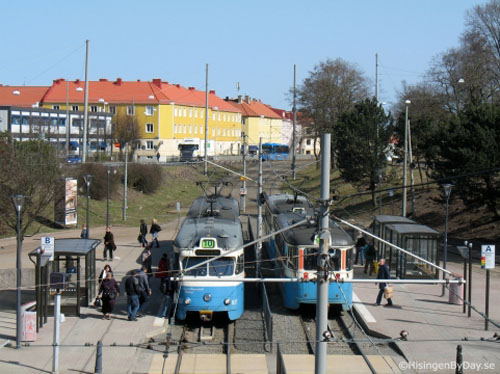
2015 – Wieselgrensplatsen in Göteborg
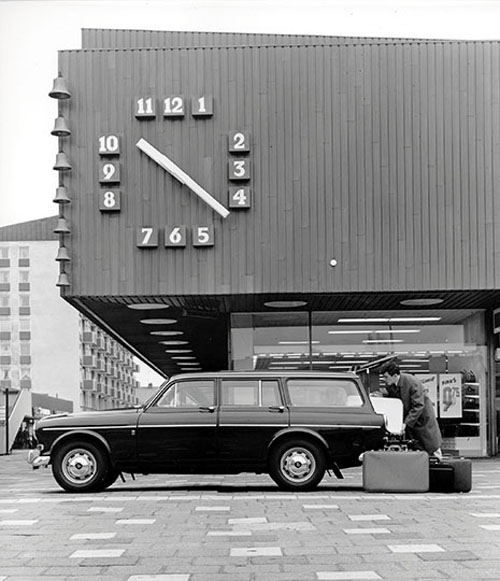
1968 – Volvo P220 Amazon
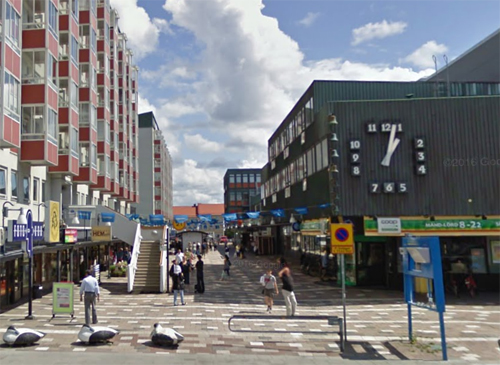
2009 – Wieselgrensplatsen in Göteborg (Google Streetview)
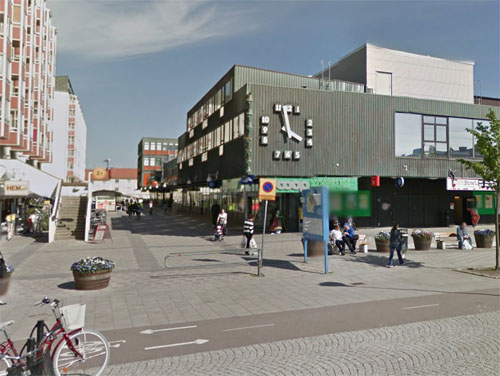
2015 – Wieselgrensplatsen in Göteborg (Google Streetview)
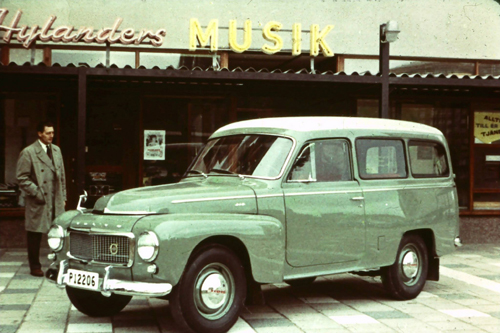
1961 – Volvo P210 on Wieselgrensplatsen in Göteborg. Hylanders Musik had a store on Wieselgrensplatsen 23 in Göteborg. (Thanks to Jan Nyrén for this great photo!)
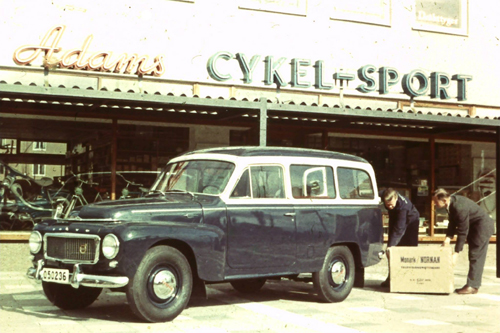
1961 – Volvo P210 on Wieselgrensplatsen in Göteborg (Thanks to Jan Nyrén for this great photo!)
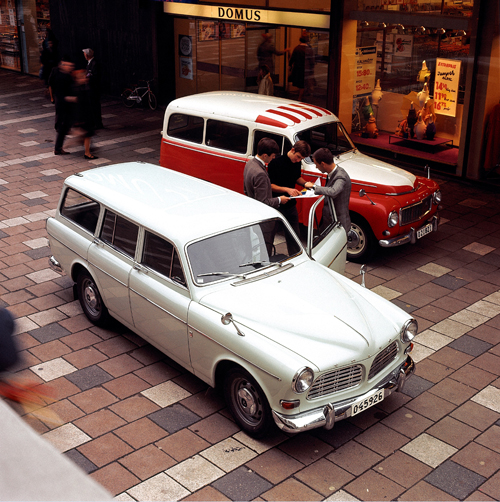
1961 – Volvo P220 Amazon and Volvo P210 at Konsum (now COOP) on Wieselgrensplatsen in Göteborg
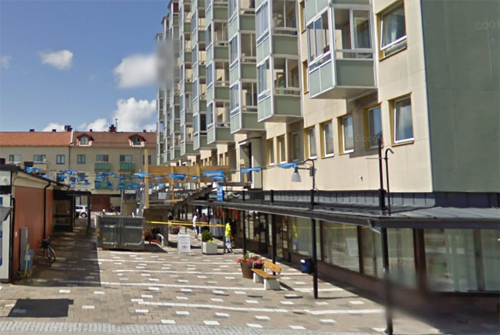
2009 – Wieselgrensplats in Göteborg (Google Streetview)
Wieselgrensplatsen is a square in the districts Brämaregården and Rambergsstaden on Hisingen in Göteborg, named after Peter Wieselgren.
At Wieselgrensplatsen you’ll find the Lundby Hospital. The blocks around it consists of Landshövdingehus. The square belongs to the more central parts of Hisingen.
Peter Wieselgren, born 1 October 1800 in Vislanda Parish in Småland, died 10 October 1877 in Gothenburg, was a Lutheran priest and leader of the Swedish temperance movement who formed the first organised temperance society in Sweden.
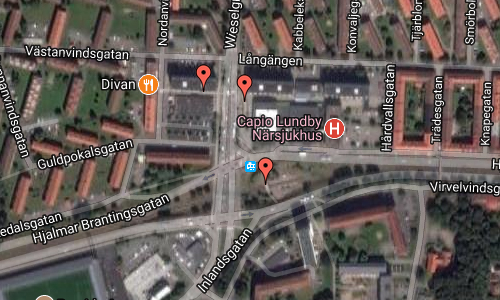
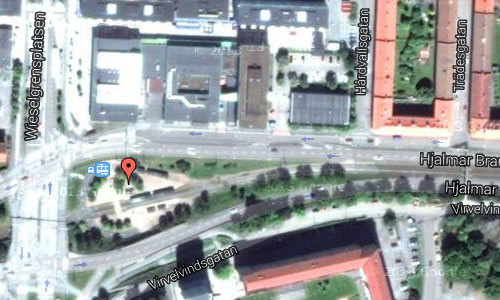
 />
/>
More information at www.wieselgrensplatsen.com and sv.wikipedia.org.
April 12th, 2015
Volvo Photo Locations Part 157

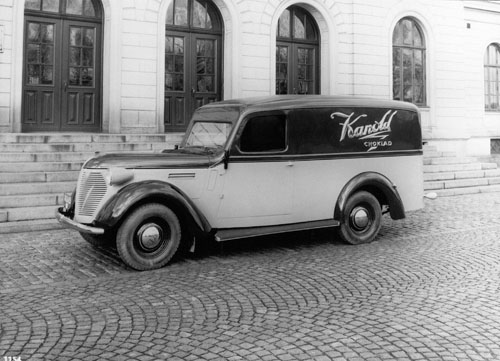
1930 – Volvo PV57
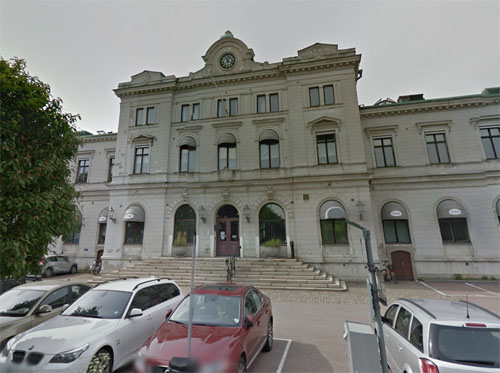
2015 – Bergslagsgatan 2 in Göteborg (Google Streetview)
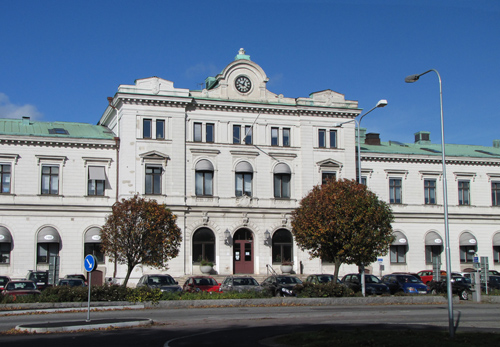
2015 – Bergslagsbanans Station in Göteborg
The building pictured above is the Bergslagen Line station in Göteborg at Bergslagsgatan 2, also known as the white house. It was built between 1879 and 1881 for the Bergslagen Railways, designed by the brothers Axel and Hjalmar Kumlien. The station building was opened October 1, 1881 and is a listed building since the 13th February 2008. The house had then been on the National Heritage Board’s list of proposed architectural monuments since 2000. The building is located at Bergslagsgatan 2 in the district Gullbergsvass
Bergslagernas Järnvägar was the largest private railroad company of Sweden with a main line from Gothenburg to Falun, in all 478 km. Bergslagernas Järnvägar (BJ) was founded in the 1870s to form a transportation system from Bergslagen, the ore-rich areas in southern Sweden to the port in Gothenburg. It was nationalized and merged into Swedish State Railways in 1948.
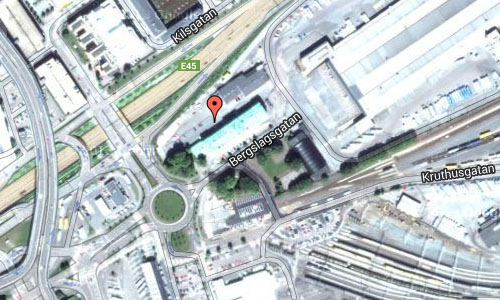
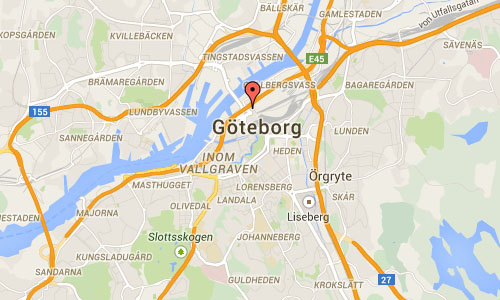
More information at sv.wikipedia.org.
April 9th, 2015
Volvo Photo Locations Part 156

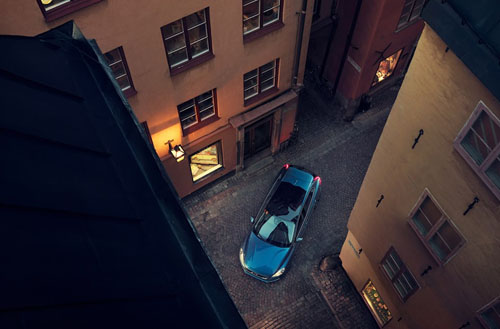
2015 – Volvo V40
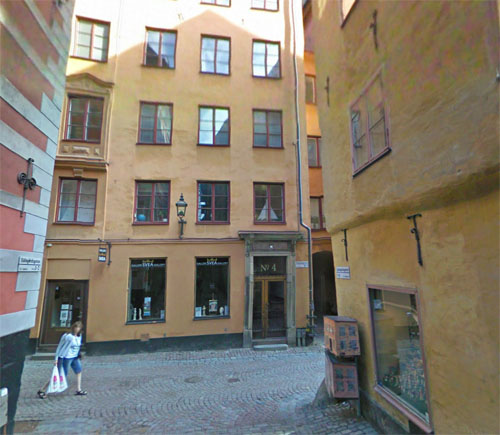
2015 – Köpmangatan in Gamla Stan, Stockholm (Google Streetview)
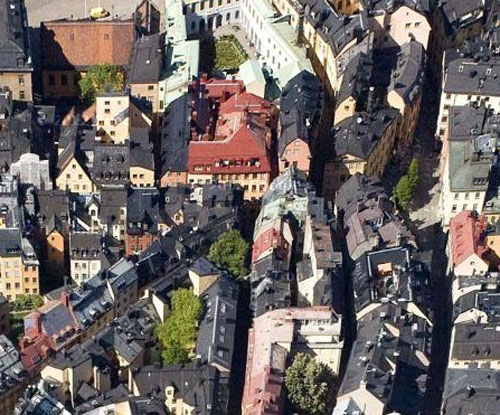
2015 – Köpmangatan in Gamla Stan, Stockholm (Google Maps)
Köpmangatan (Swedish: “The Merchant Street”) is a street in Gamla stan, the old town of Stockholm, Sweden. A parallel street to Trädgårdsgatan, it is stretching from the central square Stortorget to Köpmantorget, intercepted by Trädgårdstvärgränd, Skeppar Olofs Gränd, Peder Fredags Gränd, Själagårdsgatan, Staffan Sasses Gränd, Baggensgatan, and Bollhusgränd.
First mentioned in Latin in 1323 as in medio vici dicti køpmannagatu (“on the street called køpmannagatu”), the street served the merchants of Stockholm during the Middle Ages, and was the main connection between Stortorget and the fish market outside the eastern wall. One of the city’s medieval gates, Köpmanporten (“The Merchant’s Gate”), was once found in the eastern end of the street, until its demolition in 1685 called Köpmanvalvet (“The Merchant’s Vault”), a vault stretching across the street, thus connecting the blocks south and north of it and supporting a two stories building.
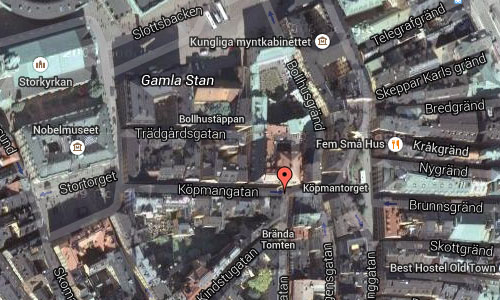
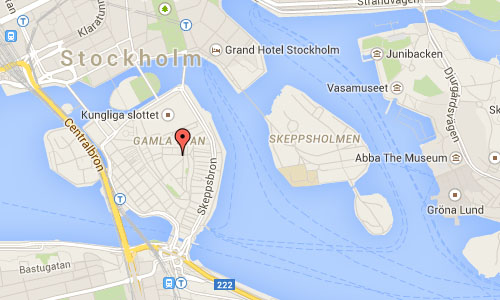
More information at www.gamla-stan-stockholm.se and sv.wikipedia.org.